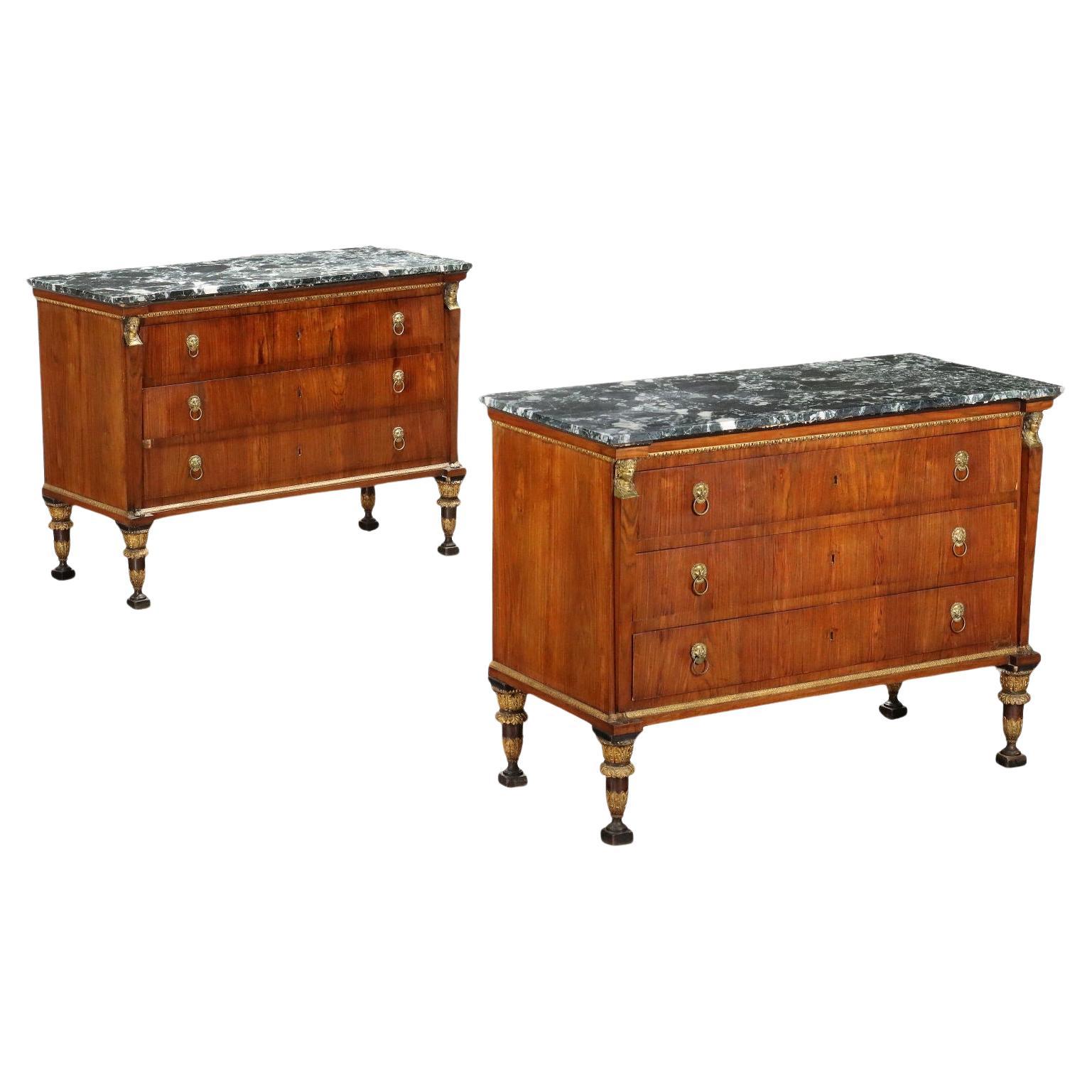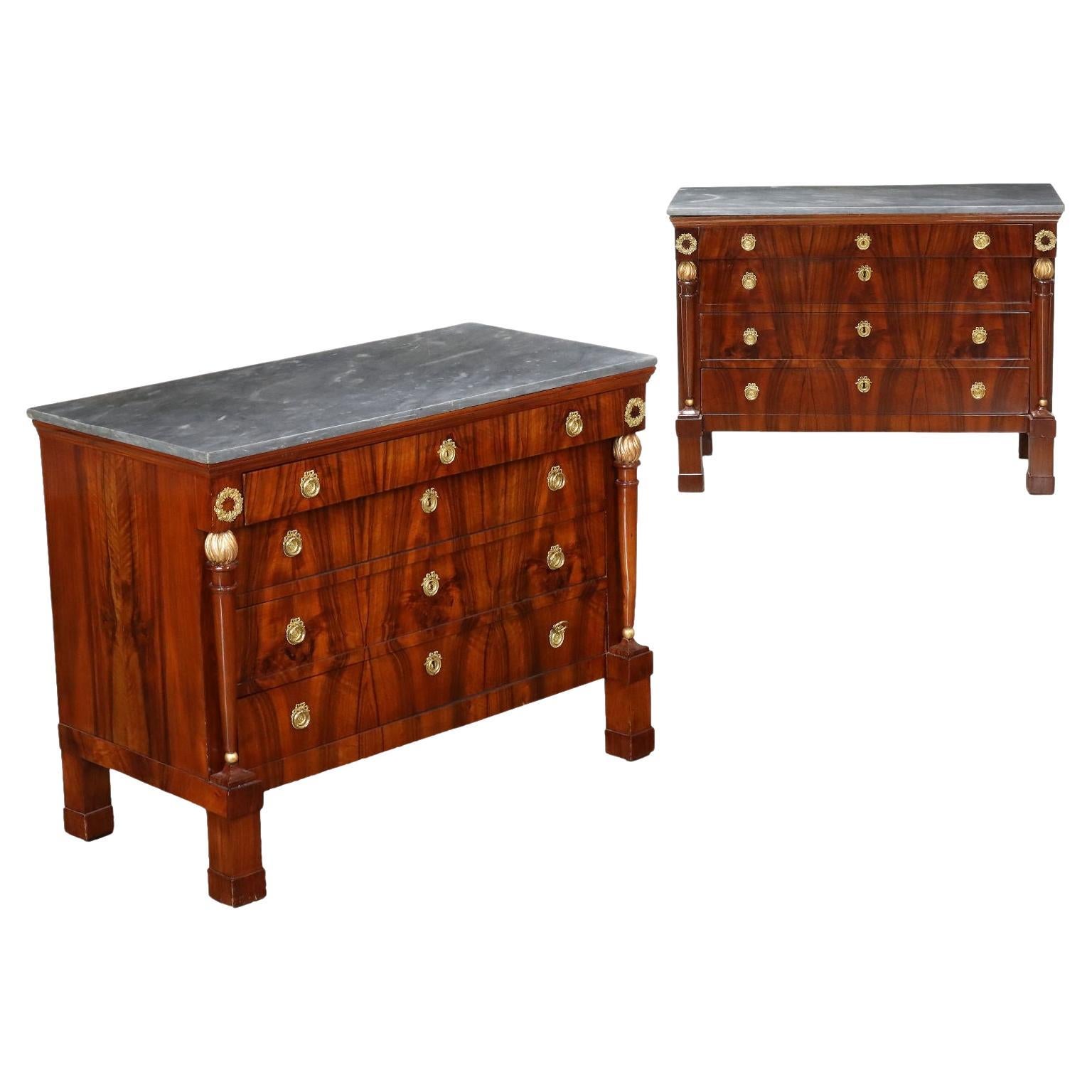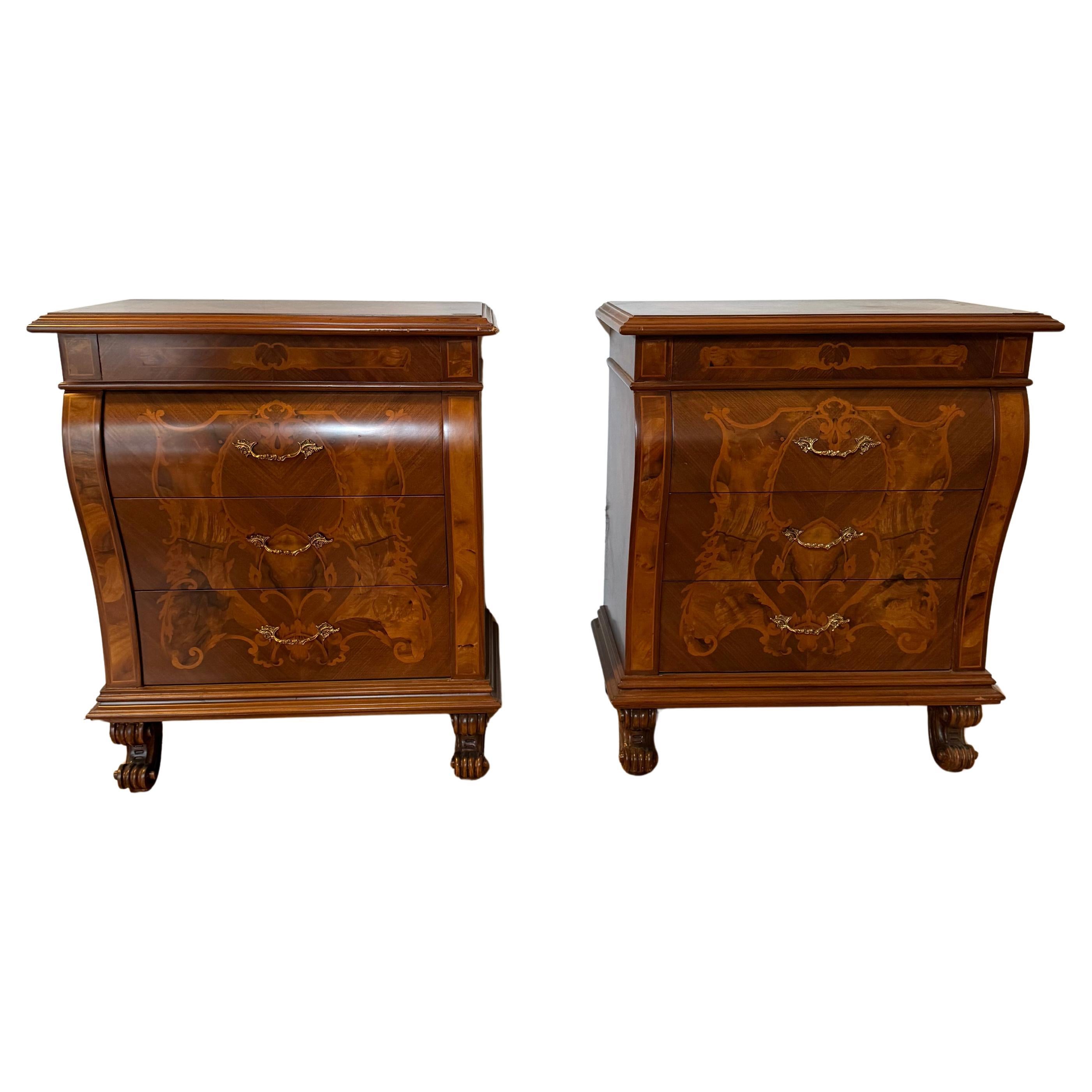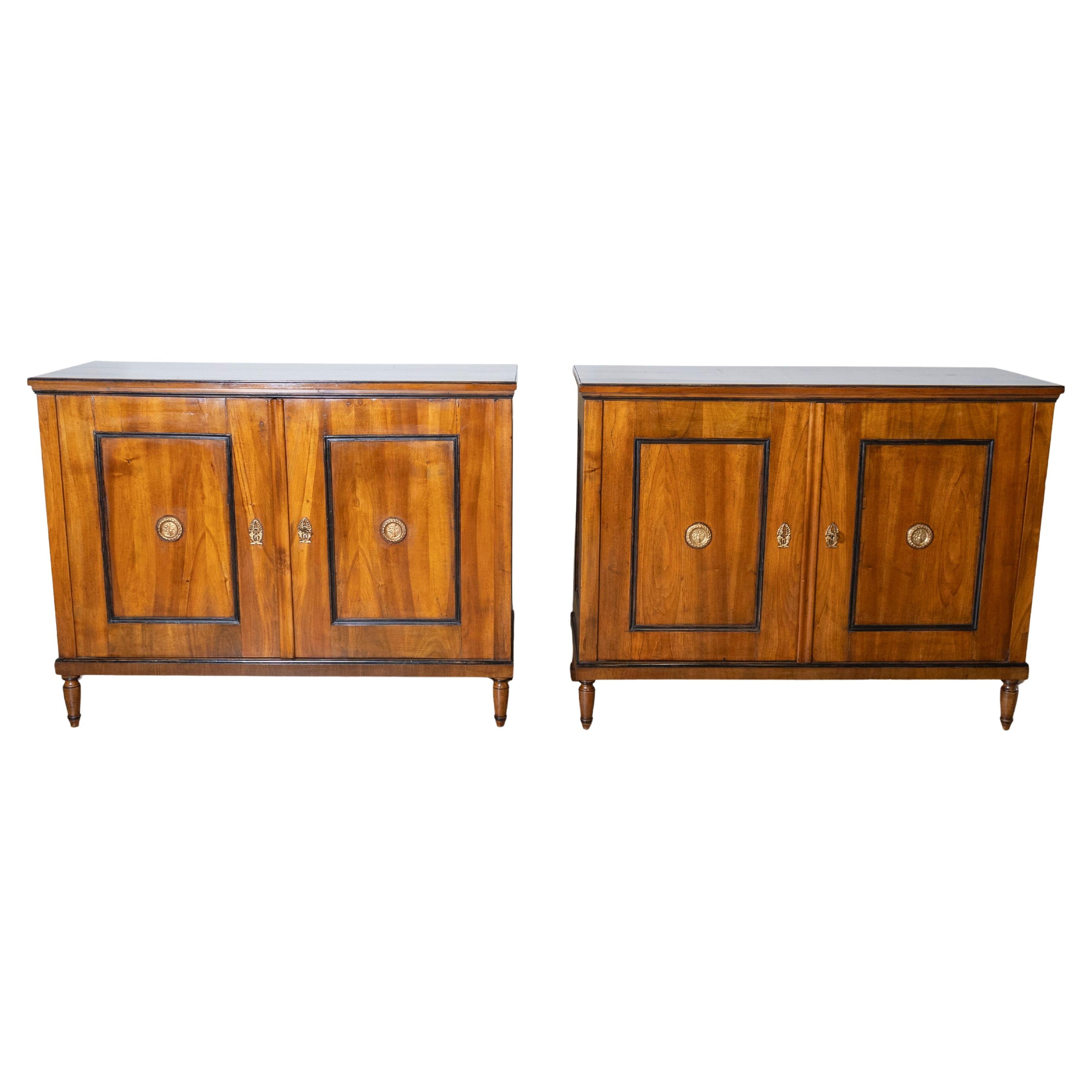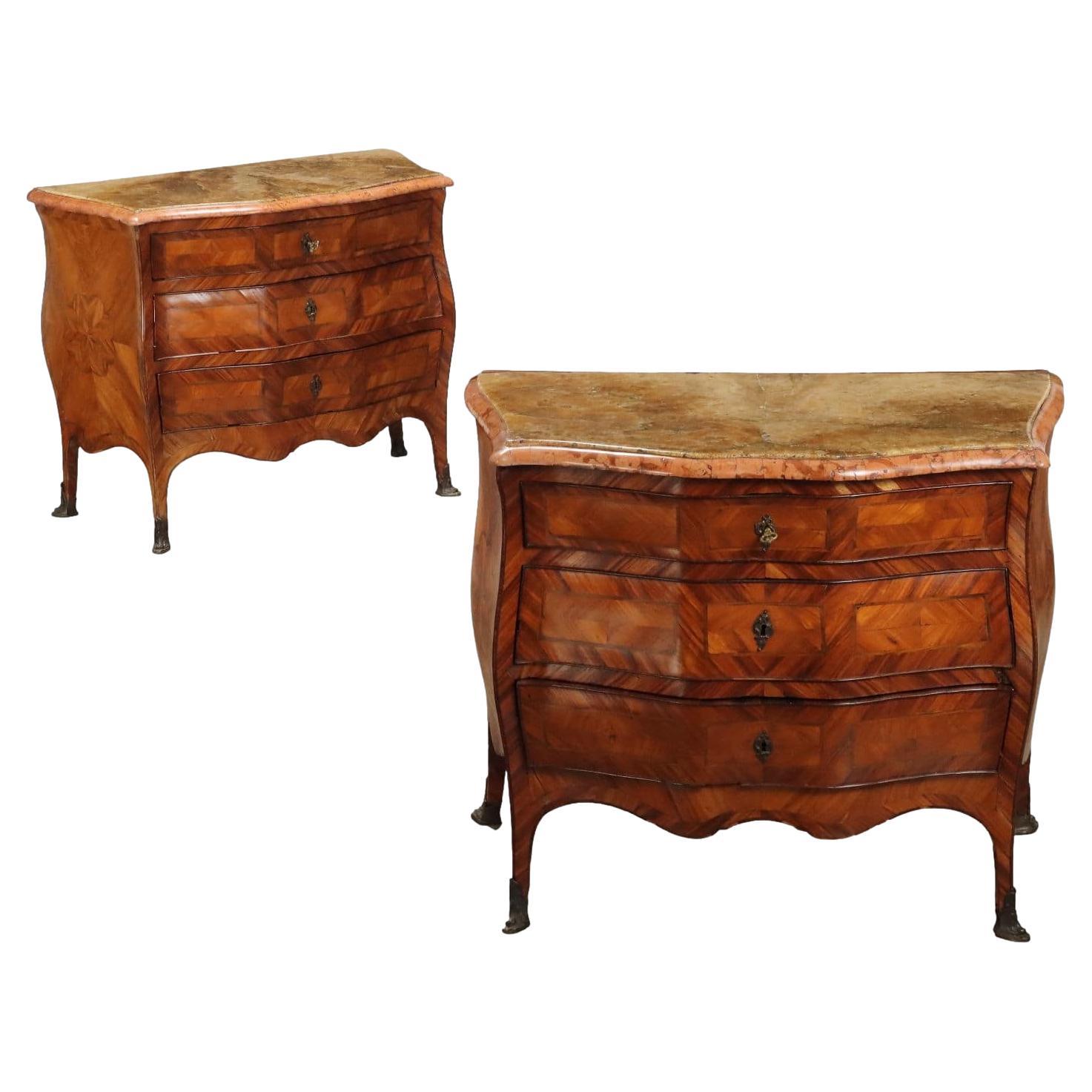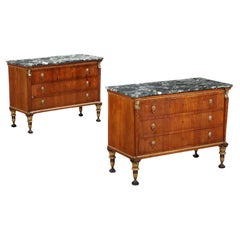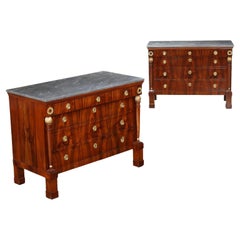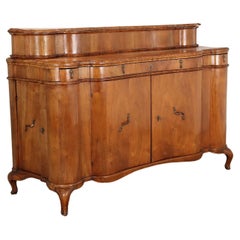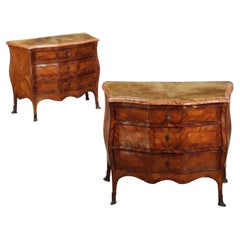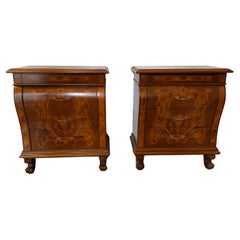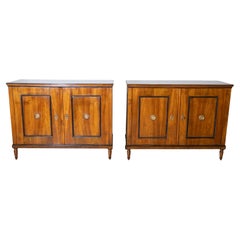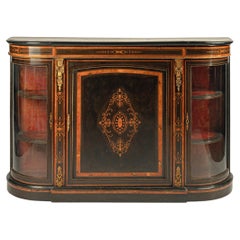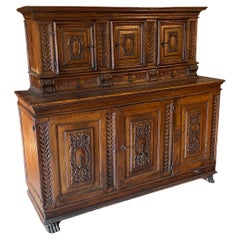Items Similar to Pair of sideboards Lucchese manufacture second decade of the 19th century
Video Loading
Want more images or videos?
Request additional images or videos from the seller
1 of 13
Pair of sideboards Lucchese manufacture second decade of the 19th century
$50,094.15per set
$62,617.69per set20% Off
£37,063.41per set
£46,329.26per set20% Off
€41,600per set
€52,000per set20% Off
CA$69,264.08per set
CA$86,580.10per set20% Off
A$76,043.32per set
A$95,054.15per set20% Off
CHF 39,671.96per set
CHF 49,589.95per set20% Off
MX$920,230.05per set
MX$1,150,287.57per set20% Off
NOK 497,226.48per set
NOK 621,533.10per set20% Off
SEK 468,518.07per set
SEK 585,647.59per set20% Off
DKK 316,743.56per set
DKK 395,929.45per set20% Off
About the Item
Pair of sideboards panelled in mahogany feather, resting on feet of which the front ones with a circular plinth, supporting uprights in the form of a lictor's fasces, terminating in leafy capitals. There is a pair of doors on the front to conceal three drawers, also veneered in mahogany feather; two additional drawers are concealed in the lower and undercounter fascias.
The meeting point between the two sashes is decorated with a symmetrical phytomorphic carving; floral and antemium carvings also adorn the under-shelf band, both on the front and the sides. The white Carrara marble top follows the contour of the cabinet, and the interior is chestnut and poplar.
While Lucca had been able to boast the status of an independent republic until 1799, that same year there was its fall and subsequent subjugation to the French. In 1805, at the explicit request of the city's senate, the Principality of Lucca and Piombino was sanctioned, the direction of which was entrusted directly by Napoleon Bonaparte to Felice Baciocchi, a Corsican general who a few years earlier had married its younger sister Elisa. She herself was given the honorary title of Grand Duchess of Tuscany and, in fact, it was she who ruled the territories directed by her husband.
Naturally, the influence of the French rulers was also reflected in artistic choices, drawing workers directly from Paris and commissioning local workshops to create works and furnishings that echoed transalpine taste. Contrary to the profound political change initiated during the Restoration period, which had sought to restore the pre-Revolutionary situation with the Congress of Vienna, the fashion for French furniture in the wake of what had been the Empire style continued in the following years. This mode was also found in Lucca itself, where Maria Luisa of Bourbon was established, who in the work of modernizing the Ducal Palace, directed by architect Lorenzo Nottolini, had furniture made faithful to this taste.
Such is the case with our pair of sideboards, overtly French in architectural and ornamental taste, but more homegrown in the choice of materials used. While the mahogany used for the veneer was a favorite wood in France, a different argument must be made for the woods used in making the frame. This is in fact not oak, which is more common in French-made furniture, but chestnut, a local wood widely used in making the structural part of furniture in central Italy. Similar discussion for poplar, which is found in the construction of the hull sides of our commodes, also frequently used in Tuscan furniture.
As mentioned earlier, the phytomorphic carvings and architectural layout also hark back to French taste: the circular plinth front feet, the drawer in the lower band as well as the two doors concealing the inner drawer unit are modes of execution that were widely used in France at the time. The idea of uprights in the shape of fasces lictorius also comes from this type of taste, with several examples in numerous pieces of furniture.
Among the most fitting comparisons in our case are some of the furnishings signed Jean-Jacques Werner, a Swiss cabinetmaker but active in Paris: the commode that came from the Governor's apartment at the Invalides and is now at the Musée des Artes Décoratifs, or the commode-secrétaire from the Grand Trianon dated 1819. The former is in fact characterized by the uprights in the shape of fasces lictors, while the latter features phytomorphic racemes on the front doors, making interesting comparisons possible even though those on the Versailles cabinet, as well as the rest of the decoration, are in gilded bronze and not carved wood as in our case. This last peculiarity of the furniture under consideration further allows us to approximate its production to a manufacture of Italian scope, where the availability of bronzes of fine workmanship was certainly more difficult, if not by importing them directly from France; on the other hand, the high quality of the cabinetry reminds us of skilled artists who entertained a close relationship with the transalpine country, if not the origin itself. It is no coincidence, perhaps, that in Lucca in those years the main workshop active for the Baciocchi first and for the Bourbon later was that of the Youf brothers, in whose production we find similar characteristics to those set out above for the pair of sideboards: they declare, in fact, their being French cabinetmakers in the taste and structure of the furnishings, while showing themselves to be open to Italian influences in the use of materials.
- Dimensions:Height: 40.16 in (102 cm)Width: 55.32 in (140.5 cm)Depth: 27.17 in (69 cm)
- Sold As:Set of 2
- Style:Restauration (Of the Period)
- Materials and Techniques:
- Place of Origin:
- Period:
- Date of Manufacture:1800s
- Condition:Wear consistent with age and use.
- Seller Location:Milano, IT
- Reference Number:1stDibs: LU1721239132452
About the Seller
4.9
Platinum Seller
Premium sellers with a 4.7+ rating and 24-hour response times
Established in 2015
1stDibs seller since 2015
435 sales on 1stDibs
Typical response time: 1 hour
- ShippingRetrieving quote...Shipping from: Milan, Italy
- Return Policy
Authenticity Guarantee
In the unlikely event there’s an issue with an item’s authenticity, contact us within 1 year for a full refund. DetailsMoney-Back Guarantee
If your item is not as described, is damaged in transit, or does not arrive, contact us within 7 days for a full refund. Details24-Hour Cancellation
You have a 24-hour grace period in which to reconsider your purchase, with no questions asked.Vetted Professional Sellers
Our world-class sellers must adhere to strict standards for service and quality, maintaining the integrity of our listings.Price-Match Guarantee
If you find that a seller listed the same item for a lower price elsewhere, we’ll match it.Trusted Global Delivery
Our best-in-class carrier network provides specialized shipping options worldwide, including custom delivery.More From This Seller
View AllPair of Empire Coffers Lucca First Quarter Nineteenth Century
By Non-Standard Furniture and Lighting
Located in Milano, IT
Pair of walnut-paneled Empire chests of drawers, Lucca first quarter 19th century. Contoured Green Alps marble tops, ebonized under-top band, three drawers on the front, hermetic upr...
Category
Antique Early 1800s Italian Empire Commodes and Chests of Drawers
Materials
Marble, Bronze
$17,292 Sale Price / set
20% Off
Coppia di Comò Impero Italia Inizi '800
By Non-Standard Furniture and Lighting
Located in Milano, IT
Coppia di comò del periodo Impero, in noce lastronati in noce rigatino fiammato, presentano sul fronte quattro cassetti di cui il primo sotto piano aggettante, poggiante sui montanti...
Category
Antique Early 1800s Italian Empire Commodes and Chests of Drawers
Materials
Marble
$5,659 / set
Ferrara Baroque Sideboard Mid-18th Century
By Non-Standard Furniture and Lighting
Located in Milano, IT
A Ferrara-made Baroque credenza supported by en cabriole feet, it has a moved front in which there are pairs of doors and drawers in the fascia: a large-sized central one and two sma...
Category
Antique 1750s Italian Baroque Credenzas
Materials
Walnut, Fir
$8,140 Sale Price
20% Off
Pair of Baroque Dressers Naples Third Quarter 18th Century
By Non-Standard Furniture and Lighting
Located in Milano, IT
Pair of Neapolitan dressers from the Rococo period. Fully convex in form, that is, made with vertical and horizontal move, they are made with the inner hull in poplar and then panell...
Category
Antique 18th Century Italian Rococo Commodes and Chests of Drawers
Materials
Wood
$45,277 Sale Price / set
20% Off
Neoclassical Tuscan Como Suite and two 18th century bedside tables
By Non-Standard Furniture and Lighting
Located in Milano, IT
Tuscan neoclassical suite, consisting of dresser and two nightstands. The dresser features a drop-down door that conceals three drawers inside with bronze pulls, and the nightstands ...
Category
Antique 18th Century Italian Neoclassical Revival Commodes and Chests of...
Materials
Marble
$12,716 Sale Price / set
20% Off
Reggiana sideboard Late 17th century
By Non-Standard Furniture and Lighting
Located in Milano, IT
Walnut sideboard with decorated front in under-top band with small architectural shelves, 3 drawers decorated with parallelepiped carvings, and 2 doors below decorated with geometric...
Category
Antique Late 17th Century Italian Other Credenzas
Materials
Nutwood
$6,647 Sale Price
20% Off
You May Also Like
Pair of Italian wooden bedside tables inlaid briar 90s
Located in Cantù, IT
Pair of Italian wooden bedside tables 90s inlaid briarwood - Private collection Domenico Rugiano!
Category
20th Century Italian Night Stands
Materials
Wood
Pair of Italian Sideboards Late 19th Century
Located in Atlanta, GA
A refined pair of late 19th-century Italian sideboards, beautifully crafted in warm-toned walnut with neoclassical inspiration. These elegant cabinets feature clean lines and symmetr...
Category
Antique Late 19th Century Italian Sideboards
Materials
Walnut
$12,950 / set
Ebonized and inlaid wooden sideboard, England, 19thC
Located in Milano, IT
Sideboard made of ebonized wood and inlaid in different woods, England, 19th century, rounded body with glazed side doors and central door with medallion inlaid with dense whorls th...
Category
Antique 19th Century English Credenzas
Materials
Harewood
Walnut double-bodied sideboard, Tuscany, late 16th century
Located in Vicenza, VI
A double-bodied walnut sideboard made in the late 16th century, about 1580, in Tuscany.
During in Renaissance, monumental forms and cut decoration were favored for furnishings. Typic...
Category
Antique 16th Century Italian Renaissance Credenzas
Materials
Wood, Nutwood
Large Venetian canterano in briarwood, late 17th - early 18th century
By Bottega Veneta
Located in Vicenza, IT
Imposant canterano vénitien de grandes dimensions, réalisé entre la fin du XVIIe et le début du XVIIIe siècle, probablement destiné à un palais ou à une demeure noble.Avec son imposa...
Category
Antique 1680s Italian Baroque Commodes and Chests of Drawers
Materials
Nutwood, Olive, Fir
Pair of Italian 18th Century Folding Chest of Drawers in Walnut and Walnut Burl
Located in Milano, MI
Pair Of Louis XV Lastronate Flap Dressers, rare pair of 18th-century walnut and burl walnut slab tiered chests of drawers from the Lombard-Venetian area, in good condition. The front...
Category
Antique 1760s Italian Louis XV Dressers
Materials
Nutwood
More Ways To Browse
Lucca Antique
Marmo Di Carrara
La Bottega
Dark Wood Credenza
Filing Cabinet Credenza
Mid Century Buffet Vintage
Nathan Vintage
Tessellated Credenza
Art Deco Mahogany Credenza
Blue Lacquer Credenza
Frank Kyle Mexico
Italian 1960s Credenza
Milo Baughman Henredon
Vintage Credenza In Walnut And Cane
Vintage Thomasville Credenza
Walnut Media Credenza
Black Chrome Credenza
Cream Credenza
